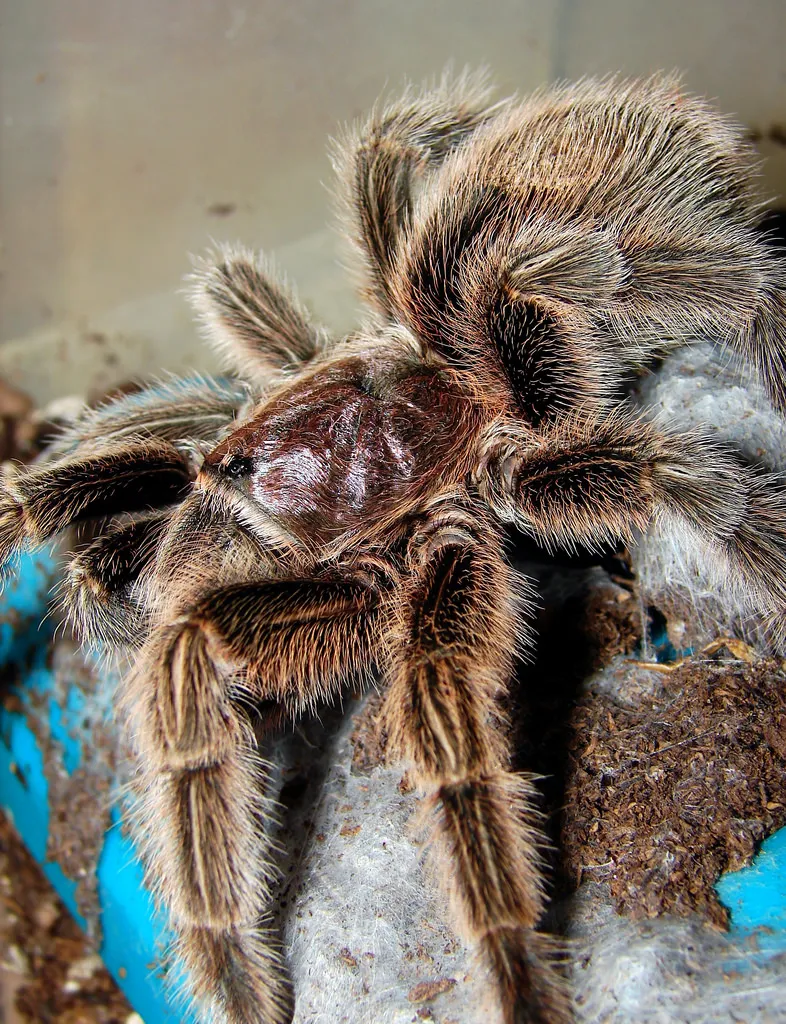What is a Chilean Rose Tarantula?
The Chilean Rose Hair Tarantula (Grammostola rosea) is a popular choice for first-time tarantula owners. Known for their docile temperament and relatively low maintenance, these spiders are native to the grasslands of Chile, Bolivia, and Argentina. Their adaptability and hardiness make them suitable for beginners, but responsible ownership requires understanding their specific needs. Their popularity stems from their relatively calm demeanor, making them less likely to bite compared to some other species. Their striking appearance, with a mix of brown, tan, and pinkish hairs, adds to their appeal. Properly caring for a Chilean Rose tarantula ensures a fascinating and rewarding pet experience, bringing a unique element of the natural world into your home.
Appearance and Characteristics
Chilean Rose Hair Tarantulas have a distinctive appearance. They are typically a mix of brown, tan, and pinkish hues. The pinkish coloration is often seen on their hairs, particularly on their legs and abdomen, giving them their name. These tarantulas are covered in urticating hairs, which they can flick off their abdomen as a defense mechanism. They possess a relatively large size compared to other spiders, with females typically reaching a leg span of up to 6 inches or more. Males tend to be smaller. They have a robust build, with a large cephalothorax (the combined head and thorax) and a well-defined abdomen. Their eyes are simple, and they primarily rely on vibrations and other sensory inputs to navigate their surroundings.
Lifespan and Size
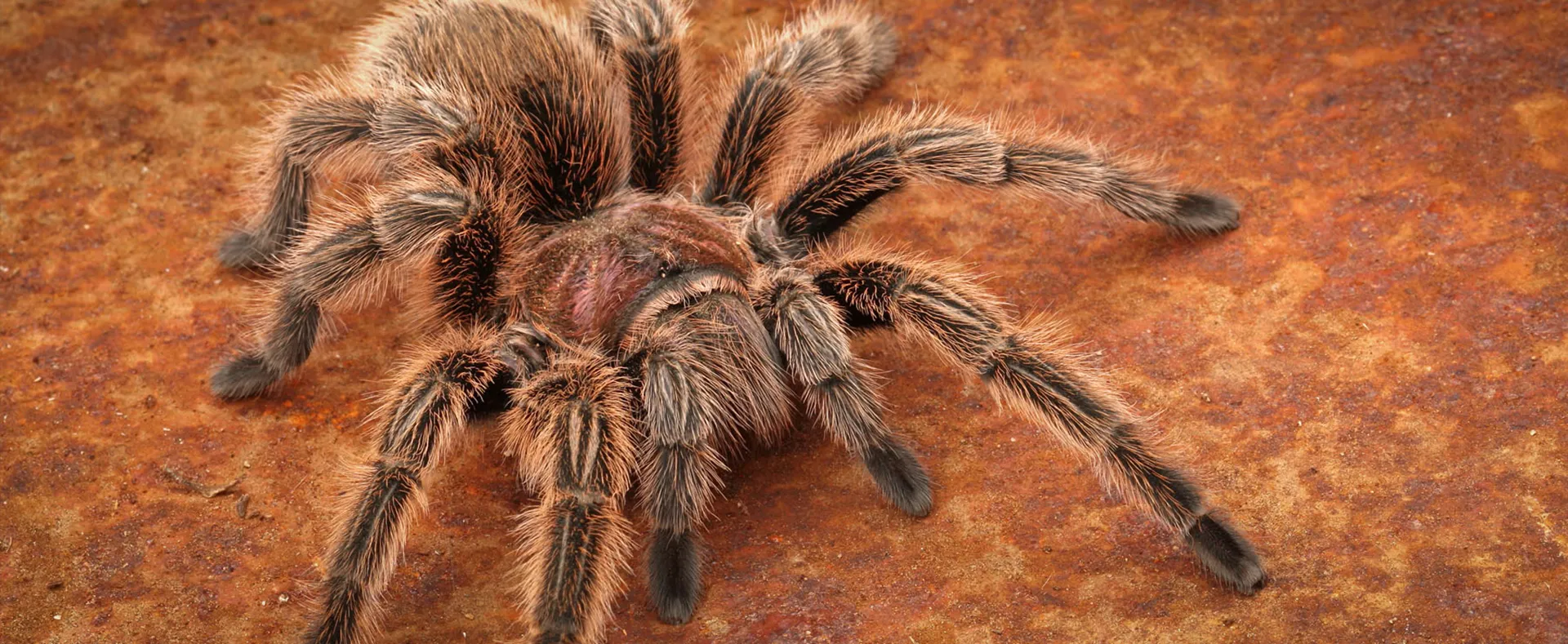
One of the appealing aspects of Chilean Rose Hair Tarantulas is their longevity. Females can live for an impressive 10 to 20 years or even longer under optimal conditions. This makes them a long-term commitment, something to consider when deciding to own one. Males, however, have a significantly shorter lifespan, typically only living for a few years after reaching maturity. Regarding size, females can grow to have a leg span of 5 to 6 inches, sometimes even larger. Males are generally smaller, with a leg span closer to 3 to 4 inches. Proper care, including appropriate housing and feeding, plays a crucial role in ensuring the tarantula’s healthy growth and lifespan.
Chilean Rose Tarantula Habitat Requirements
Creating the right habitat is essential for the well-being of your Chilean Rose Hair Tarantula. They are terrestrial spiders, meaning they live on the ground, so their enclosure should reflect this. The setup should provide them with a sense of security and allow them to exhibit their natural behaviors. Key factors include the size and type of enclosure, the substrate used, and the maintenance of appropriate temperature and humidity levels. A well-designed habitat will not only keep your tarantula healthy but also provide an interesting and rewarding display for you. This section will give you detailed guidance for building the best possible home for your Chilean Rose Tarantula.
Enclosure Size and Setup
The size of the enclosure is crucial for the comfort of your Chilean Rose Hair Tarantula. A general guideline is to provide an enclosure that is at least three times the tarantula’s leg span in width. For a fully grown female, a 10-gallon tank or a similar-sized enclosure is usually sufficient. The enclosure should be wider than it is tall since these tarantulas are terrestrial and do not typically climb. The enclosure should have a secure lid to prevent escape. Ensure the lid has adequate ventilation to allow for airflow and prevent the buildup of excessive humidity. A proper setup involves providing a secure hide, like a piece of cork bark or a half log, where the tarantula can retreat. The presence of hiding spots helps reduce stress.
Substrate and Decor
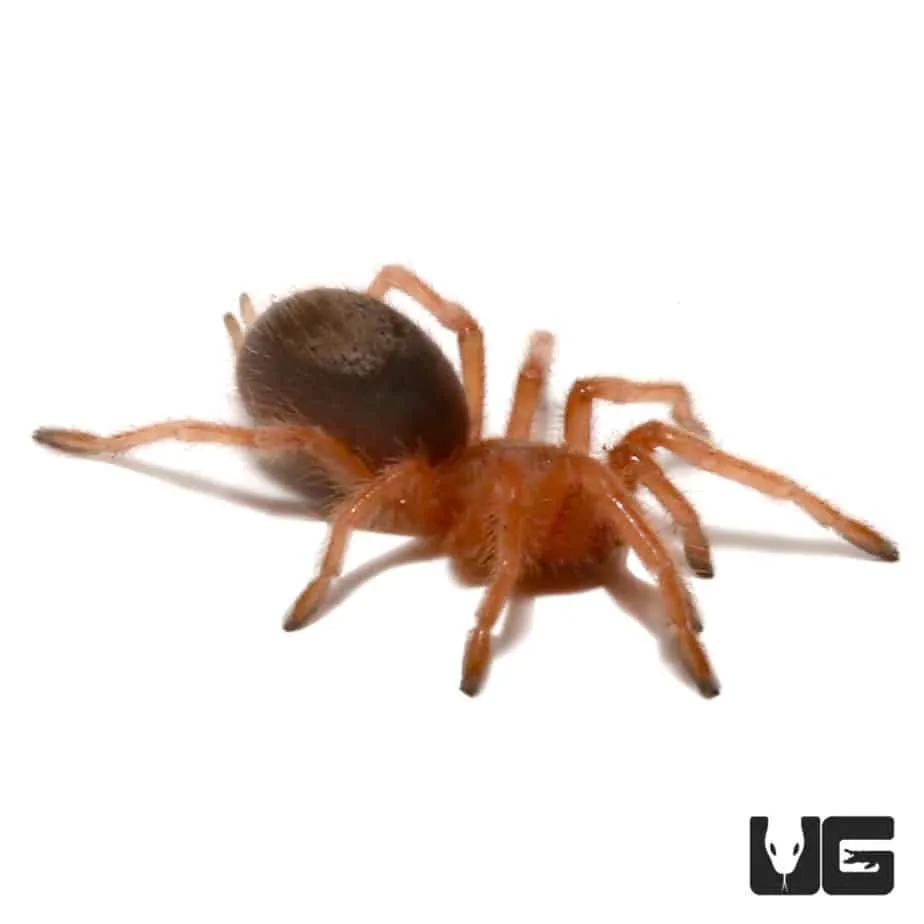
The substrate you choose for your Chilean Rose Hair Tarantula’s enclosure plays a vital role in maintaining the right humidity level. A good choice of substrate includes a mix of peat moss, coconut fiber (eco-earth), and a small amount of vermiculite. This combination provides moisture retention and helps with burrowing. The substrate should be deep enough (2-4 inches) to allow for burrowing behavior, although Chilean Rose Hair Tarantulas are not prolific burrowers. Adding some decor can enhance the environment and provide the tarantula with a sense of security. Cork bark, fake plants, or rocks can serve as hiding places and visual interest. Ensure the decor is secure and free of any sharp edges that could injure the tarantula. Regularly check the substrate for mold or excessive moisture and replace it as needed to maintain a healthy environment.
Temperature and Humidity
Chilean Rose Hair Tarantulas thrive in a temperature range of 75-85°F (24-29°C). Maintaining this temperature is essential for their metabolism and overall health. You can use a heat mat or a low-wattage heat lamp placed on the side of the enclosure (never directly above) to achieve this. It’s crucial to monitor the temperature with a thermometer to ensure it stays within the appropriate range. Humidity levels should be kept between 60-70%. You can achieve this by lightly misting the enclosure once or twice a week, depending on the humidity levels of your home and the type of substrate used. Using a hygrometer to monitor the humidity is highly recommended. Ensure proper ventilation to prevent the buildup of excessive moisture, which can lead to mold growth and other health issues.
Feeding Your Chilean Rose Tarantula
Feeding your Chilean Rose Hair Tarantula is a straightforward process, but it’s essential to understand their dietary needs to keep them healthy and thriving. These tarantulas are opportunistic feeders, meaning they will eat almost anything that moves and they can overpower. Proper feeding involves offering them the right types of insects and considering the frequency of feeding based on their age and size. Observing your tarantula’s eating habits and adjusting your feeding schedule accordingly is critical. Overfeeding can lead to health problems, while underfeeding can stunt their growth and affect their overall well-being. This section provides a comprehensive guide to feeding your Chilean Rose Hair Tarantula, ensuring it receives the nutrition it needs.
What to Feed
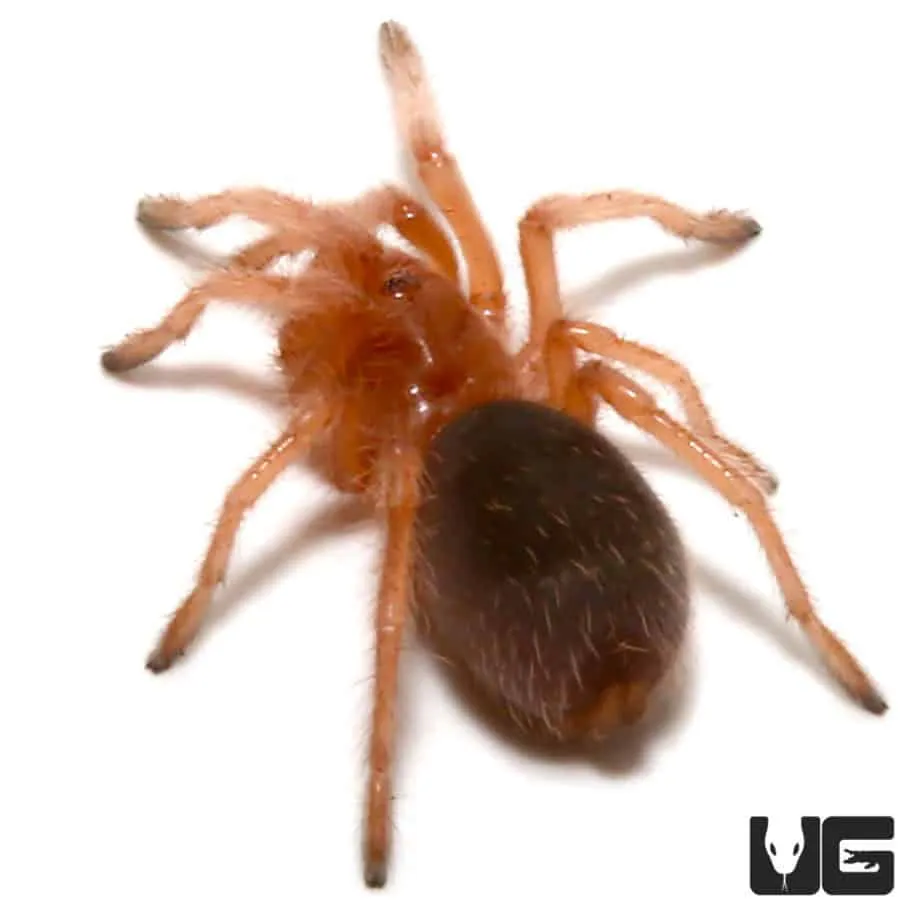
The primary diet of a Chilean Rose Hair Tarantula consists of insects. Good choices include crickets, mealworms, and dubia roaches. Variety is key to providing a balanced diet. Occasional treats like small pre-killed pinkie mice can also be offered, but it should be done sparingly and only for adults. Ensure the insects you offer are gut-loaded with nutritious food, such as vegetables and commercial insect food, at least 24 hours before feeding them to your tarantula. This ensures the tarantula receives essential vitamins and minerals. Avoid feeding your tarantula insects that have been exposed to pesticides. Remove any uneaten food within 24 hours to prevent mold growth and maintain a clean environment.
Feeding Frequency
The feeding frequency for Chilean Rose Hair Tarantulas depends on their age and size. Spiderlings (young tarantulas) should be fed two to three times a week, while juveniles and adults can be fed once a week or every other week. Observe your tarantula’s behavior; if it appears plump and healthy, reduce the feeding frequency. If it is constantly hungry and actively hunting, increase the frequency slightly. Adults can go for extended periods without food, especially before molting. Always provide fresh water, even if the tarantula isn’t actively eating. Overfeeding can lead to obesity, which can be detrimental to their health. Adjust the feeding schedule according to their appetite and activity levels, ensuring their well-being.
Watering and Hydration
Providing fresh water is crucial for your Chilean Rose Hair Tarantula’s hydration. A shallow water dish, with water only deep enough for the tarantula to drink from, should be available at all times. You can use a bottle cap or a small, stable dish for this purpose. Regularly clean and refill the water dish to prevent bacterial growth. Alternatively, you can mist the enclosure lightly once or twice a week, particularly in drier environments. This provides the tarantula with a source of hydration and helps maintain humidity. Avoid over-misting, as excessive moisture can lead to health problems. Always ensure the water source is clean and readily accessible for your tarantula to prevent dehydration and promote its health.
Handling and Interaction
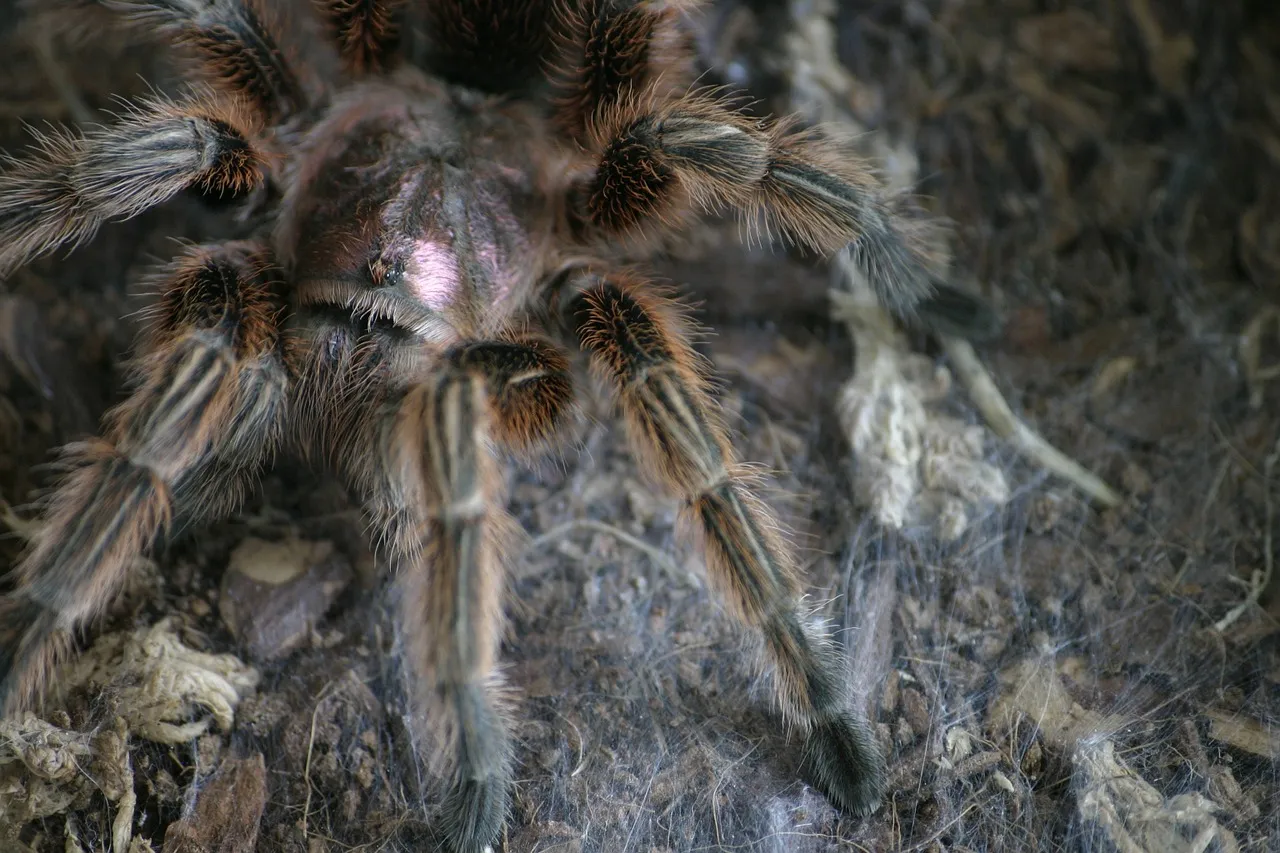
While Chilean Rose Hair Tarantulas are known for their docile nature, handling them should be approached with caution. These spiders are not generally prone to biting, but their urticating hairs can cause irritation. Proper handling involves understanding their behavior and being mindful of their needs. Handling should not be done frequently, as it can cause stress to the tarantula. If you choose to handle your tarantula, it’s important to do so safely and with respect for the animal’s well-being. Understanding how to interact with your tarantula ensures a safe and positive experience for both you and your pet. This section offers the best guidelines to handle with care.
Safe Handling Practices
If you choose to handle your Chilean Rose Hair Tarantula, always do so with extreme caution. Start by gently coaxing the tarantula onto your hand. Avoid sudden movements or grabbing the spider, as this can startle it. Handle the tarantula close to the ground or over a soft surface, in case it falls. Be aware of the urticating hairs, which the tarantula can flick off as a defense. Avoid touching the tarantula’s abdomen, as this is a sensitive area. Wash your hands thoroughly before and after handling to prevent the spread of bacteria and remove any potential irritants. It is important to be patient and observant. If the tarantula shows signs of stress or discomfort, such as raising its front legs or flicking its hairs, immediately stop handling and let it retreat back to its enclosure.
Understanding Tarantula Behavior
Understanding the behavior of your Chilean Rose Hair Tarantula is key to providing proper care and ensuring a safe handling experience. Observe their posture and movements. A tarantula that is feeling threatened or stressed may raise its front legs, a defensive posture. They may also flick their urticating hairs towards you. Before handling, make sure your tarantula is calm and relaxed. Avoid handling your tarantula after a recent feeding or during its molting cycle, as it will be more vulnerable and stressed. Always be patient and allow the tarantula to move at its own pace. By understanding their behavior, you can build a better relationship with your pet while minimizing the risk of stress or harm.
Common Health Issues and Prevention
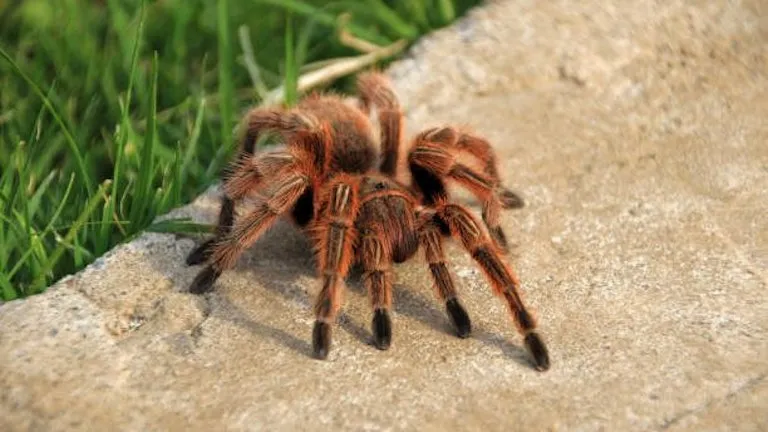
Like any pet, Chilean Rose Hair Tarantulas can be susceptible to various health issues. However, with proper care and preventative measures, you can minimize the risks and ensure your tarantula lives a long, healthy life. Understanding the common health problems and the steps you can take to avoid them is crucial for responsible pet ownership. Regular observation of your tarantula’s behavior, appetite, and overall condition is essential. This section covers the most frequent health issues in Chilean Rose Hair Tarantulas, providing the knowledge necessary to keep your pet healthy and happy.
Shedding and Molting
Molting is a natural process for tarantulas, allowing them to grow and replace their exoskeleton. During molting, the tarantula sheds its old skin, revealing a new, larger one beneath. Before molting, your tarantula may stop eating, become less active, and may hide more often. The process can take several hours or even days. Avoid disturbing the tarantula during molting, as it is extremely vulnerable. After molting, the tarantula will be soft and vulnerable for a few days, during which it should be left undisturbed. Do not feed the tarantula until its fangs have hardened, typically a week or so after molting. Properly understanding this process is essential to avoid undue stress on your tarantula.
Signs of Illness
Knowing the signs of illness in Chilean Rose Hair Tarantulas can help you detect and address health issues promptly. Some common signs include loss of appetite, lethargy, lack of coordination, and unusual postures. Parasites can sometimes be a cause of illness, so checking for tiny mites on the tarantula is recommended. If you notice any of these signs, consult with an experienced tarantula keeper or a veterinarian specializing in exotic animals. Provide optimal environmental conditions and proper nutrition to prevent illness. Regular observation and a proactive approach to health care can significantly contribute to your tarantula’s well-being.
Conclusion
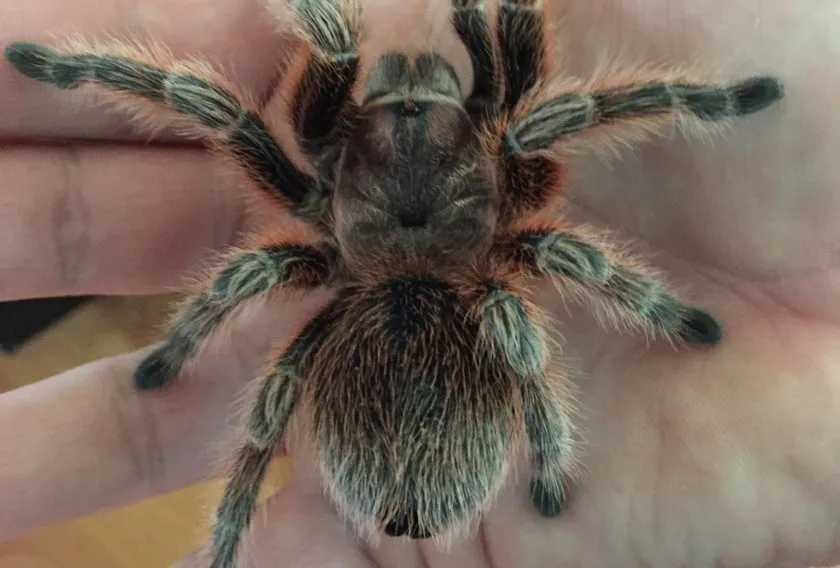
Caring for a Chilean Rose Hair Tarantula can be a rewarding experience. By understanding their basic needs, creating an appropriate habitat, and providing a healthy diet, you can ensure your tarantula thrives. Always handle them with care, and recognize the signs of illness. With proper research and dedication, you can enjoy the fascinating world of tarantulas and provide a happy, healthy life for your pet. The Chilean Rose Hair Tarantula is a beautiful and easy to care for pet, suitable for new and experienced keepers. Providing a comfortable environment and healthy habits makes it a rewarding experience for many.
